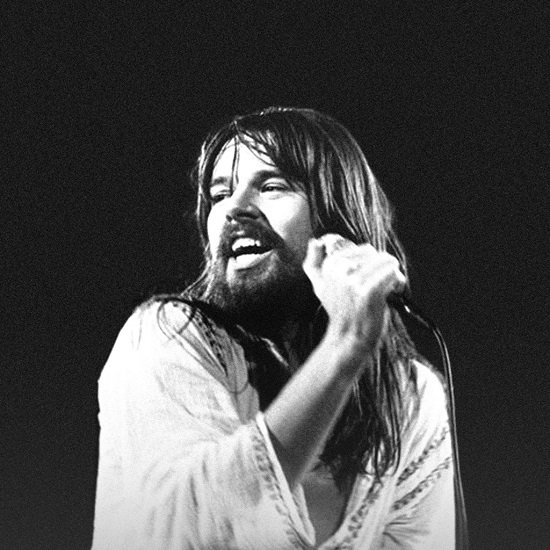
Here’s a strange coincidence that brings a bit of musical history solidly back into the present. I had almost finished this piece and was in the process of editing, stepping away from and tweaking when I felt the need to go and photograph some live musicians again. On most Sundays during the summer months, you can catch some solo performers and duos at Eccleston Yards near Victoria Station in London. The gigs are organised by Talentbanq, a company that promotes unsigned musicians, mainly in small venues and you can usually find its hands-on CEO Ray Jones there as compere and sound engineer. The first performer on stage was Erin Bowman, from New Jersey via California, playing a mixture of classic rock interpretations and original material. I was hooked from the start by her laid-back acoustic version of Tom Petty’s “American Girl”, but the last song in the set was the one that did it. In London, in 2021, Erin was doing her version of Bob Seger’s “Against the Wind”, originally released in 1980. Never underestimate the staying power of a great song.
If you’ve been seriously into music for over fifty years, then you’ve had an artist (or a few) that got away. The ones you were convinced would be massive but didn’t make it at all, or only in certain territories. One of mine was Bob Seger, with or without The Silver Bullet Band. I knew he deserved be a UK Top 20 artist, but it took about twenty years to prove me right (sort of).
It’s been a long journey, but where did it start? Nottingham’s commercial station Radio Trent in 1974, I guess. I heard “Get Out of Denver” blasting out of a tiny radio speaker and I was hooked. No doubts, no second thoughts, this was the mutt’s. Was it a Chuck Berry rehash? Of course it was, but Chuck could never have written those lyrics and his laconic drawl wouldn’t have allowed him to fire and spit them out the way Bob Seger did. This was “Tulane” on steroids and I was hooked, although it would take a couple of years before I was finally reeled in.
Bob Seger spent years grinding round the Midwestern circuit building up a massive and loyal live following before first troubling the US singles charts in 1967 and 1968 respectively with “Heavy Music” and “Ramblin’ Gamblin’ Man” which both went on to become huge live favourites. He was a classis seventies example of building up a live fanbase to help (eventually) sell records. During the period between ‘68 and ’75, his band went through personnel and name changes and moved from Capitol to Reprise and back again. Reprise had tried to break him through into the mainstream, even trying to break the UK, but they were only reaching musicians and the committed (“Get Out of Denver” was covered by Eddie and the Hot Rods and Dave Edmunds and “Rosalie” was covered by Thin Lizzy). So back to Capitol again.
What happened next was really interesting. The first Capitol album, “Beautiful Loser” was the blueprint for what was to come over the next ten years. It was a combination of up-tempo rockers (“Katmandu”) and slower, more nostalgic pieces (“Fine Memory” and “Momma”), the well-chosen cover (“Nutbush City Limits”) and the classic wistful mid-tempo pieces (“Beautiful Loser” and “Jody Girl”). Its peak chart position in the US was 131, but it went on to hit double platinum certification. It wasn’t perfect, but everyone involved knew that this was the template; more of the same would do very well indeed, but there was a way of building up a head of steam before the next studio album. The mid-70s was the era of the double live album; if you had a band that could reliably turn it on live and you put them in front of a friendly crowd you had an instant hit, so that’s what Capitol did.
“Live Bullet” was the clincher; a classic example of a live band at their peak. You got Bob Seger originals, including the classic-to-be “Turn the Page” (later covered by Metallica) and covers of “Nutbush City Limits” and “Let It Rock”. It went quintuple platinum in the US and now no-one was looking back. In the space of a year Bob Seger had arrived, at least in the US. It was always a mystery to me that no-one else in the UK seemed to get this but, with hindsight, it was just too American for the time. In 1975 Bob Seger stood a chance of being bracketed with the better bands breaking out from the pub rock scene, but was doomed in the UK after the insular and inward-looking punk explosion. It wasn’t stopping me; I grew up in a town where any sort of escape, to London or Detroit, was a good thing. And if I’m honest, the inner music snob in me likes to support an artist/band that no-one else has heard of.
As far as the North American continent (and later, Australia) were concerned, Bob Seger had made it. In the US alone, he sold over 30 million albums between 1975 and 1991, and that’s people who went to their local record shop and parted with cash for vinyl, cassette, eight track (remember that) and, towards the end, CD. The stars had aligned; the formula for the albums had been established with “Beautiful Loser”, the songwriting was perfectly honed, the production was superb (and don’t underestimate the importance of the backing vocalists from “Night Moves” onwards), Capitol was 100% behind the artist and The Silver Bullet Band was the perfect vehicle to go out and sell the songs to a live audience. Between 1975 and the peak, when “Against the Wind” hit Number One in the US album charts in 1980, Bob Seger could do no wrong in his home territory, Australia and big chunks of Europe, so why not the UK? Two obvious reasons.
The first one is about economics. Despite a reasonable amount of radio play, only the albums “Stranger in Town” and “Against the Wind” made any impact on the album charts and the singles did even worse. It was the wrong kind of music for the UK at that time despite being huge across the pond. It didn’t really make any economic sense for Capitol/EMI to invest huge amounts in touring the UK if it didn’t significantly add to record sales, and they were probably right. The Silver Bullet Band only played five gigs in Britain and I was at two of those; Glasgow Apollo (14/10/77) and Wembley Arena (21/11/1980). I’m slightly biased, but both were stunning gigs that were well-attended by wildly enthusiastic audiences and they were his first and last UK gigs. Unfortunately, you couldn’t break the UK market with five gigs. If you were counting the beans at Capitol/EMI, why would you invest any more in a territory like the UK when you could tour arenas in the USA and Canada promoting new albums and selling shedloads of merchandise. I understand that completely.
The second point is a bit more controversial, and more stalwart Bob Seger fans might want to stop reading now. I’m still a huge fan, but I couldn’t honestly say that there was one album that I wouldn’t want to skip an odd track on (with two exceptions, coming later). From 1975 onwards, Capitol/EMI were pitching Bob Seger at the traditional album market and they didn’t seem to see that the material wasn’t always even. “Night Moves”, “Stranger in Town” and “Against the Wind” had more than their fair share of classic songs, but they weren’t consistent or consistently excellent. You want reasons for that? Pressure to write brilliant new songs for albums every eighteen months while touring constantly, using the Silver Bullet Band for part of each album and The Muscle Shoals Rhythm Section for the other part, or maybe just burnout. The albums had to keep appearing regularly to satisfy the public, whether they were perfect or not. After “Against the Wind”, sales started to slow and gaps between albums increased as Seger’s family life became more important. And that should have meant the last chance for UK success, but you never know, do you?
In the summer of 1996, I was in the Pub on the Pond in Swansea having lunch with my mate Bekky when I heard a familiar voice from the CD jukebox (remember them?). It was Bob Seger and I had to go over and check it out, because it wasn’t a song I’d heard him play. It was a storming cover of the Chuck Berry classic “C’est la Vie”/”You Never Can Tell” and the album was “Greatest Hits”, released in the UK in 1994 which sort of proved my theory that Bob Seger had a huge number of classic songs but they weren’t all on the same album. It reached Number 6 in the UK and also spawned the first UK Top 40 single with “We’ve Got Tonite”. It probably helped that the songs were all FM radio-friendly and continued to be played on pockets of UK radio long after their initial release. There was a certain irony that Brits nostalgic for the 70s were buying into an album that was packed with nostalgia for 1950s/60s America. It’s a near-perfect album and the UK marketing worked like a dream.
There was another Seger album I would happily listen to all the way through, and it was intended to be the swansong. “Ride Out” was released in 2014 and it would have been a fitting famous final scene; it’s a classic album that I would recommend to anyone. Only it wasn’t the final album; as a response to the death of his long-time friend from Detroit, Glenn Frey in 2016, he released one final album, “I Knew You When” as a tribute, in 2017. That was the second encore and Bob Seger had finally left the building.
As a long-time fan, it was a validation that he finally achieved success in the UK even if it was a little late. If the run of albums starting with “Night Moves” had started a year earlier or five years later, things might have been very different, but it won’t keep him awake at night – he sold over 75 million records worldwide, wrote songs that were covered by almost everyone (there are over sixty covers of “We’ve Got Tonite”) and finished his career on his own terms. He wrote classic songs that we could all relate to and, if “Against the Wind” isn’t played at my funeral, will you all please deal with the people responsible. If you already know his work, you’ll probably understand why I’ve written this; if not, you could do a lot worse than check him out anyway. Rock and roll never forgets.
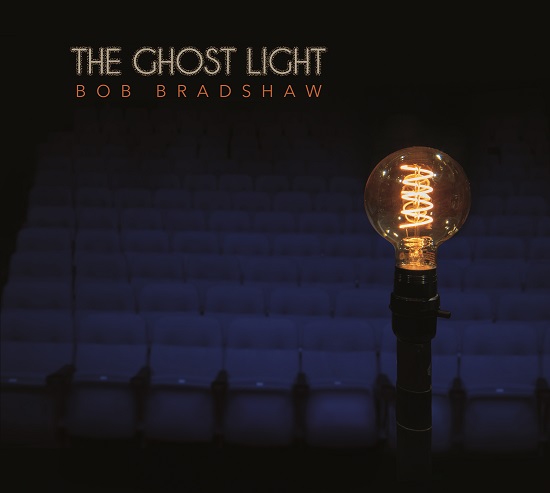
Do you know what the ghost light is? Me neither, until I saw the press release for Bob Bradshaw’s latest album. It’s a single bulb left on after all of the other lights in a theatre are switched off. It might be superstition; it might be practical. Whatever the reason, it’s an appropriate metaphor for any album released in the grip of the pandemic; the album’s there and it shows that the creative juices are still flowing, but there’s no way to get out there and promote it in the theatres where the only sign of life is a single light shining.
The album’s built around a core of Bob Bradshaw’s electric band with remote contributions from the likes of Dave Brophy, Dave Westner and Zachariah Hickman and each of the eleven songs is a collaboration between Bob and at least one other writer. It might sound a little patchwork, but the unification comes from the quality of the songs and Bob’s honey-over-gravel voice at their centre. “The Ghost Light” occupies a territory somewhere between country and rock, with interesting little musical diversions like the Transylvanian tango of “Sideways”, which uses clashes of style and an element of discordancy to emphasise the story of a skewed and fascinating, but transient, relationship.
Bob Bradshaw isn’t a confessional singer-songwriter; his songs are generally separate and self-contained, each one building its own entirely believable world, although you can find themes linking the songs if you look closely enough (more on that later) and it’s not unusual to find a reference to well-known songs in the music or lyrics, which brings us quite neatly to the album’s opening song, “Songs on the Radio”, a full-band piece with keys and two electric guitars creating a lovely mid-tempo drive-time feel for a song that explores the nostalgia and memories that can be evoked by hearing a favourite song on the radio. There’s a reference in there to “Across the Universe” and a harmony guitar solo that’s more Wishbone Ash or Eagles than Thin Lizzy.
There are hints at the supernatural and mystical in the songs “Gone” and “Light of the Moon” (an everyday story of a ship lured off course by siren song) and there’s a strand of loss that runs through the album, particularly in a trilogy of songs as the centre of the album, “Blue”, “Come Back Baby” and “She’s Gone for Good” that chart the stages in the death of a relationship, from sadness through regret and finally acceptance. Redemption follows this trilogy in the shape of the foot-on-the-monitor rock ‘n’ roll of “21st Century Blues” with its apocalyptic environmental message, hinting at Jackson Browne’s “The Road and the Sky” (or is that just me?). The sense of loss and alienation extends into the brooding menace of “In the Dark” before the album closes with “Niagara Barrel Ride Blues”, a solo resonator-backed song that uses the barrel ride as an extreme metaphor for tackling life’s challenges; you have to expect a bumpy ride and you need a good team to support you.
As always, Bob Bradshaw has created an album packed with powerful, creative songs that seduce with their simplicity and hooks that just won’t let go. Its appeal is both instant and lasting and a testament to the songwriter’s craft.
“The Ghost Light” is released in the UK on Friday 30th April on Fluke Records (FR11).
Here’s the video for “Sideways”:
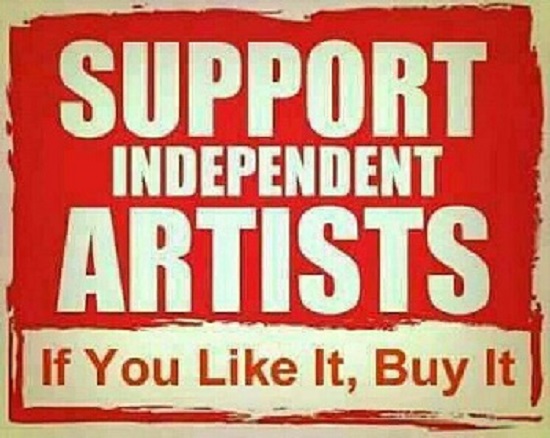
The Guardian published an article a couple of weeks ago by Tim Burgess of The Charlatans about the state of the music business in the light of Brexit, streaming and downloads. It’s an interesting read as far as it goes and it set the cogs whirring about why we got here, where we go next and will it be better or worse, or just different.
In my lifetime, the music business has been turned upside down. In the seventies, bands went out on tour to build up a following and to promote singles and albums, which is where the real money was. If you’ve survived this long and remember all this, bear with me, it’s worth getting some historical context. No internet, no mobile phones, only three TV channels and (until October 1973) no commercial radio. So you were left with the pirates like Caroline and the erratic reception of overseas stations like Luxembourg to let you know about new music. And the music press…
Every week I bought the NME, Melody Maker and Sounds and my paper round meant I could sneak a look at Blues & Soul and Disc/Disc and Music Echo as well. By 1973, with a bar job and a Saturday job with an entertainment agent booking acts for local pubs and clubs, I had a few bob to spend on some of the music I was reading about. Add the cost of my print habit to the cost of buying an album (about five percent of the average weekly wage in the mid-seventies) and being into music was a real financial commitment (even if you took the risk of doing a few temporary swaps with your mates to dip into their choices).
Buying music in the seventies wasn’t just an investment in listening to a piece of music. You exchanged your hard-earned (cash of course) for something physical that you carried home in a bag before lowering it on to the turntable, gently caressing the vinyl with the stylus and waiting for a glorious noise to erupt from the speakers. But let’s just rewind that a few minutes. If you bought an album and you were taking public transport home, you had the chance to look at the album artwork as well. A good album sleeve was so much more than a bit of on-shelf advertising; a twelve-inch square format created opportunities for quality photography and graphic design to enhance the musical content of the package. When it worked, it was an extra visual dimension to a piece of aural art:
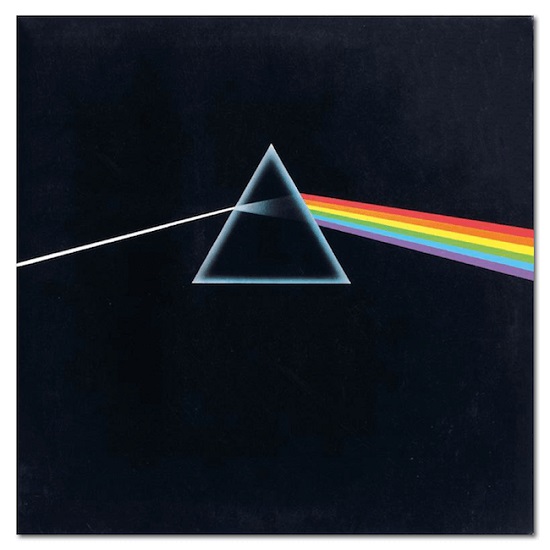
When it didn’t, it looked a lot like this (which proves that you can’t get it right all the time):
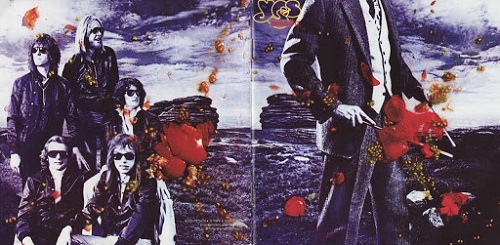
The gatefold sleeve doubled up the visual real estate (exploited perfectly on Thin Lizzy’s “Live and Dangerous” double album with a shedload of Chalkie Davies pics all over the outer and inner sleeves of the album):
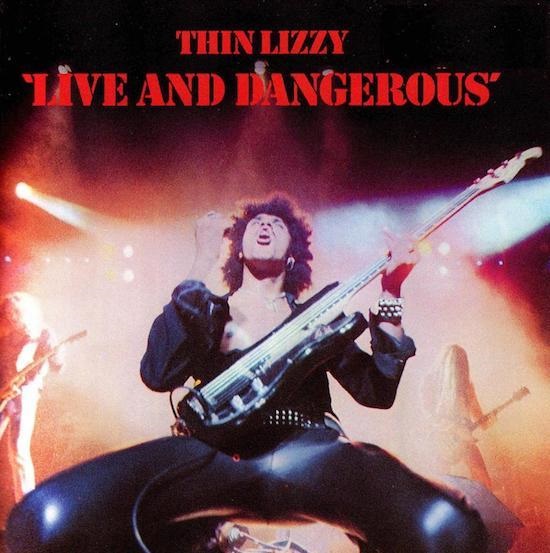
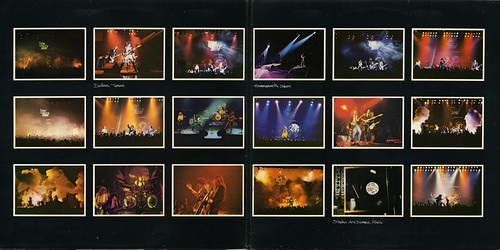
Designers started to exploit die-cut sleeves and all sorts of interesting innovations; PiL’s “Metal Box” looked really clever, but only if you hadn’t seen The Small Faces’ “Nut Gone Flake” packaging twelve years earlier.
The visuals were only part of the album experience; you could get a lot of text on a sleeve, particularly if you had a printed inner sleeve or three as well. There was all the obvious geek stuff; musicians involved, instruments played (or not played if you were Queen) and lyric sheets, but some bands made a real effort; UB40’s cover for the first album “Signing Off” in 1980 was a copy of the unemployment benefit attendance card, they’d been filling in before they broke through. Ten years later, Squeeze released a live album with a boxing concept, “A Round and A Bout” with a little bonus – they listed every gig they’d done between 1974 and 1990 on an insert with the album. Thanks guys, you’ve no idea how useful that’s been to me over the years. Seriously.
I’m sure you get the message by now. During the first vinyl era, the experience was about much more than just listening to the music. You could carry an album around at school as a sign of your taste and discernment and to impress the other gender (I pitied the guys who carried Groundhogs and Genesis albums, but that’s Darwinism for you). It was a bit like creating a mixtape a few years later and a playlist many years later. Or drinking bottled designer lager in the eighties. If you were a fan of music in the seventies or eighties you were committed and attached to it; it had a financial and emotional value. And it had a longer lifespan; since the mid-nineties, the norm is for singles and albums to achieve their highest chart position in the first week of release, but fifty years ago the climb to the top of the charts could take weeks (and probably a few bulk purchases in chart return shops to help it along).
This isn’t a dewy-eyed, rose-tinted trip down memory lane. The seventies and eighties weren’t perfect; the music business was still a business, but it was one where labels invested in bands with a view to development over several years. A moderately successful band writing their own material could make a living for a few years with royalties on sales, radio, juke box and club plays and independent labels were few and far between. Things are a bit more polarised these days; the business only supports guaranteed winners and everyone else has to do their own thing. Time for a bit of a polemic: the technology that enabled the digital revolution degraded our experience of music. Listening to compressed audio on inadequate playback systems is the norm for most people now, despite the vinyl comeback, and the majority of listeners don’t pay any attention to artwork, credits or sleeve notes. We’ve walked blindfold into accepting a gradual erosion of the musical experience in the name of progress and fashion. We also have at least one generation that doesn’t believe in physical musical formats and certainly doesn’t believe in paying for them.
Fortunately the same digital technology that devalued music by making no-degradation copying possible, then compression, along with affordable storage and massive improvements in internet bandwidth, have enabled affordable home recording. Technological improvements cut both ways and musicians are a resourceful bunch; if you can’t get a deal with a major label, what have you lost? You don’t need access to a studio; you can set up at home. You don’t need access to a major label’s mastering and pressing facilities; you can find any number of those online. You don’t need a distribution network; you can load your music up to download and streaming services and make peanuts, or you can sell CDs and albums on your website by mail order and alongside other merchandise at your gigs.
In normal times, this isn’t a bad business model; you might be able to stay afloat if you have another job, have good merchandise to sell on tour, or both. And along comes lockdown; no gigs and no pop-up shop opportunities. I wish I could honestly say that I recommended live streams, but it’s not for me; I really miss the eye contact and (selfishly) I miss the opportunity to take pictures at gigs. If it works for you, that’s great; enjoy it and make a contribution; I’ll be waiting for the moment when live music re-emerges after this terrible disease is brought under control.
Me, I’ll continue to avoid the mainstream by buying (in order of preference) vinyl or CDs directly from artists’ websites, from independent record shops and at gigs. Two people I know have opened vinyl shops in the last few years and both are succeeding despite the current trading situation; long may they continue.
And that resourcefulness and creativity that musicians always demonstrate wasn’t going to be stifled by any number of lockdowns; no way. All of those skills developed and equipment bought to set up home studios have been subtly repurposed to enable musicians to collaborate by sharing audio and video files online. I don’t know any musicians who see this as an ideal situation, but, like solitaire, it’s the only game in town. After nearly a year and millions of audio files bouncing around the internet, albums that were in progress have been completed remotely and albums have been conceived, gestated and born. It doesn’t matter how difficult you make life for musicians (or artists generally), they will always find an outlet.
Whenever we reach the new normal, whatever that may be, spend your money in a way that benefits the people making the music you love. Buy physical copies of music either directly from bands or from independent record stores – there are loads of them. Most importantly, get yourself out to as many gigs as possible. I’ll see you at the front.
 A producer, a photographer and two musicians walk into a pub. Sorry, there isn’t a punchline to this; it’s just what happened. A quick pre-Christmas beer with some music business friends to chew the fat; what do you think we talked about? As always with these semi-unplanned sessions something good came out of it. We’ll leave it to Graeme Wheatley, bass player and songwriter with the band Deep Blue Sea to tell the story, enhancing it with some music trivia. You might want to start this piece whenyou have about an hour to spare because it’s a bit addictive, especially after Riot Towers made a contribution,
A producer, a photographer and two musicians walk into a pub. Sorry, there isn’t a punchline to this; it’s just what happened. A quick pre-Christmas beer with some music business friends to chew the fat; what do you think we talked about? As always with these semi-unplanned sessions something good came out of it. We’ll leave it to Graeme Wheatley, bass player and songwriter with the band Deep Blue Sea to tell the story, enhancing it with some music trivia. You might want to start this piece whenyou have about an hour to spare because it’s a bit addictive, especially after Riot Towers made a contribution,
Sitting in The New Cross House pub the other night with Allan McKay (something that could very easily become habit forming), we were talking about his series of guest articles “High Fives” in Music Riot – sign up now if ya haven’t already!
I’ve written a few before and always like rambling on about whatever, so I was happy to quickly volunteer to write one for this Christmas – even before Allan gave me my first pressie of the year – even if I had no idea what to waffle on about.
We were with Iago Banet, a guitarist from a band that I’ve heard are not that bad and we were talking about a gig we did a few weeks ago. Our singer, Dre Smith, had lost her voice and we were doing the gig as a 3 piece – playing songs we’d never played before. I proudly boasted that I’d sang the entire lyric to “Blinded By The Light” by Brucie without a single rehearsal. Allan asked if I liked Manfred Mann’s version or the original best, then Iago reminded me that after 3 attempts we’d had to abandon “All Along The Watchtower” because I kept getting the first line wrong!!! Pride comes before…
Anyway, this conversation led to the topic of this High Five.
Five covers that I think are better than the original.
Only my opinion here – but when I got to thinking about it – there’s maybe 20 or 30 I could muse about. So, I thought I’d kick it off with two people who I consider to be un-betterable – but concede that in these two occasions, they are bettered.
Song 1
All Along The Watchtower – Bob Dylan – Jimi Hendrix
OK, if you know me at all, you may have heard me at sometime mention the name Bob Dylan. He’s the cat, the verbal acrobat-tery, the lyrical dexterity and temerity in all sincerity. A couple of weeks ago we were playing Bude R&B Festival, which involved a good 4 hour drive back and forth. Amanda Dal, our wonderful drummer, asked me, unprompted, to play the three albums Bob recorded in 1965 that “invented Rock Music as we know it”. Much to Iago’s horror. So we had a great journey back and forth listening to Bob. It’s Amanda’s turn next, so I am going to get 4 hours of singer songwriter LP. The fact that she’s a ringer for Bob makes me favourable disposed to her from the get go – so – I’m ok with this!
Anyway, some people say (fools that they are) that any cover of a Bob song is going to be better than Bob’s version. BUT THEY ARE WRONG!!!! This has only ever happened once in the whole wide universe since the beginning of time. And only one person could a done it. Jimi. Y’know, I’d love to be able to wipe the tape and hear Jimi’s version of Watchtower again for the first time. Can you remember that moment? I can’t. But listen to it now. The swagger, the invention, the sass, the sheer coolness. Four minutes of perfect cool. If Jimi hadn’t recorded it, would we remember the original? Was it just a fairly average track on a subdued and pared back album from Bob who might have been wondering at the time where he was going next. Recorded in 1967 after the “fall” it was a total turn away from the more blues inspired electric albums and a return to his more folkie side, but Jimi took this track, rocked it up, funked it up and delivery to my mind one of the greatest little guitar pop songs of all time.
Oh, BTW, the title of Bob’s album, John Wesley Harding. It was named after a Texan outlaw of that name – only they spelled it wrong!!! He was called John Wesley Hardin.
Compare and contrast:
Song 2
Nothing Compares 2U – Prince – Sinead O’Connor
I was a big Prince fan. Still miss the guy. He might have had demons and might have been just a tad obsessed but look at the catalogue of pop songs. Inventive, fun, joyous, rude, rock and raunch and lovesexy. He made pop a bit dangerous, a lot of fun and a lot of cool – combined a bit of Jimi, a bit of Marc, a bit of James Brown and a lot of genius. Until Sinead covered this song I would not have thought anyone could touch the little chap at his own game. I kinda thought Prince songs were indelibly stamped with Prince’s logo. You can’t touch this….
I wuz wrong. The frailty and fragile nature of the song fits Sinead and both somehow meld. She is the song, the song is her. That just doesn’t happen very often – if at all. That revolting phrase “you owned it” churned out on brain dead TV talent shows ad nauseam for once applies. You can’t think of the song without thinking of Sinead and vice versa. They might be so entwined that it overshadows her career.
OK, that’s two down and just to sum them up, nobody else has done a cover of a Prince song better than Prince and ditto Bob. Argue away, I’m not listening.
Compare and contrast:
Song 3
With A Little Help From My Friends – The Beatles – Joe Cocker
This is weird. The Beatles FFS? The greatest band ever. The greatest song writing partnership of the 20th century. The band that wrote the book (and the sequel). Have you heard some of the covers? “Hey Jude, Hey Bing”? Trust me, it was an album. My dad had it. Can you imagine the scene in our house? He was a jazz musician and I think he made this one attempt to be down with his son. He’d spent some futile time trying to tell me that all of this pop music stuff was nonsense and real music would eventually come into its own and Benny Goodman, Duke Ellington et al would be on Top of the Pops (Pops in this case being hep cat chat for Dads). Suffice to say most covers are cheesy in the extreme or just for shock value with nothing of value added. From Matt Monroe to Siouxsie Sioux. But, Joe? That voice. That presence. That simple honesty and stripped back truth. It’s a song, dare I say, that Paul didn’t really think was the Dog’s Bs so he suggested that Ringo sang it as a little bit of fun “What would you do if I sang out of tune?” and the whimsy fitted the feel of Sgt Peppers. But it was far from a stand-out track.
Now, fast forward a mere year or so. On stage at Woodstock and Joe says “the title of this song says it all”. The song is imbued with something more. A part of the hippy dream is captured in the performance. It’s a time piece. Oh and that voice? Come on. Just go have a listen. Band ain’t too bad either.
Song 4
Respect – Otis Redding – Aretha Franklin
Like Joe, this cover takes the song into places the original didn’t. Like the others too I guess. But with this one, you start pretty high up – with that voice, Otis. A voice that can quite easily make you cry. My Girl? Try A Little Tenderness? I Been Loving You Too Long? I’m tearing up now. And I’m a tough guy…
But Aretha takes a lyric that just might veer towards a bit misogynistic these days – y’know, man works all day – comes home to little lady cooking for him and expects a bit of R – E – S – P – E – C – T – and she makes it the first bona fide feminist mega hit defining moment of the decade. Oh yeah, and it was her major first hit after 10 years fighting against “the man”!!
What Aretha did changed the world. A cover version of a pop song changed the world? Yes, that’s what I said. Made a massive difference to the feminist movement and the civil rights movement. The impact of this little pop song can’t be ignored. That’s how deep my love is.
Oh, BTW, Otis didn’t really like the cover – but learned to live with it when the dosh rolled in – and also – listen to his version – most people think the lyric “R – E – S – P – E – C – T find out what it means to me” is part of the original.
Song 5
Girls Just Wanna Have Fun – Robert Hazard – Cyndi Lauper
For years I’d thought Prince wrote this especially for Cyndi. Someone told me some Fake News and I never questioned it. It’s a great song and it seemed believable. It’s my wife’s favourite “getting ready for Friday Night” song – so I had to include it for her.
There’s not a great deal to say about it other than, in Cyndi’s hands and voice, it’s perfect pop. In Robert Hazards? Well, have a listen to the song below. My main question is, How did Cyndi hear this very very average song and say “I can make this song a mega hit that will last generations and become Graeme’s wifes’ favourite “getting ready for Friday Night song” for all time”? I dunno the answer but one thing I will point out is, the song lasts 2 minutes and 30 seconds and the actual track lasts 4 minutes and 30 seconds. And by strange coincidence, when my wife says she’ll be ready in 15 minutes… you can fill in the rest.
Just before I trot off to have a mince pie, there were a couple of things I considered but rejected and hopefully some of these will incite you to invective 🙂
- Leonard Cohen covers – it’s easy to say other people sing them better than Lenny. That’s not the point. We can all say a photograph of a tree looks more like a tree than a Van Gogh painting of a tree. I don’t know where I’m going with that – other than Lenny is the Van Gogh of pop – funny, sad, dark, deep, tortured and Chaplinesque – there’s a crack in everything – that’s how Lenny gets in. I like his cracks. In his house there are many flaws – all of them interesting.
- Led Zeppelin – when you actually claim to have written all your covers yourselves – it doesn’t apply.
- Anyone covering Tom Waits with a gravelly voice – don’t be silly (Sir Rodney).
- Anyone covering Tom Waits with a lovely voice – as above.
- The Blues – it’s totally impossible to compare Crossroads – Robert Johnson to Cream. Both are wonderful in their own way – and I bet you can think of lots more examples. So, off you go, your challenge is now to name 5 blues songs that have brilliant originals and brilliant – but significantly different – covers.
Many thanks to Allan for allowing me to stop work for 3 hours to write this 🙂
Have yourselves a merry little Christmas, if the fates allow.
Cheers
Graeme
Written before the election December 2019 (I might not be in such a frivolous mood after that).
Sorry Graeme, but we need to have the last word here (not about the election, not even going there), especially after squeezing in two High Fives in one piece, but we did mention another song, which was a band covering their own song. Thin Lizzy’s “Nightlife” version of “Still In Love With You” should have pushed all the buttons as a duet between Phil Lynott and the wonderful Frankie Miller, but it was a bit of a mid-tempo plodder. Someone obviously worked out that it was a potential anthem, slowed it down, stuck a truly wonderful Brian Robertson solo in there and, voila, rock classic.
 First of all, let me say that this is only available in 375ml bottles rather than the standard 750ml, but it comes in two packages: plastic with a screwtop and glass with a genuine cork. But we’re more interested in quality than quantity aren’t we, so let’s have the tasting notes. Well, I’m getting leather jackets with studs and MOFO patches on the back, shoulder length hair, well-worn Levis and cowboy boots. The ambience of The Midland Hotel Bar in Mansfield in 1973 and Metal Mickey’s rock sessions downstairs in Nottingham Palais in the mid-eighties. It’s a robust flavour with the nuances of Deep Purple, Thin Lizzy and Wishbone Ash (with just a lingering aftertaste of Black Sabbath) and none of the thud and blunder of some of the less subtle bands of the era. It’s Austin Gold’s second album (or mini album) and it’s only available on vinyl or as a download.
First of all, let me say that this is only available in 375ml bottles rather than the standard 750ml, but it comes in two packages: plastic with a screwtop and glass with a genuine cork. But we’re more interested in quality than quantity aren’t we, so let’s have the tasting notes. Well, I’m getting leather jackets with studs and MOFO patches on the back, shoulder length hair, well-worn Levis and cowboy boots. The ambience of The Midland Hotel Bar in Mansfield in 1973 and Metal Mickey’s rock sessions downstairs in Nottingham Palais in the mid-eighties. It’s a robust flavour with the nuances of Deep Purple, Thin Lizzy and Wishbone Ash (with just a lingering aftertaste of Black Sabbath) and none of the thud and blunder of some of the less subtle bands of the era. It’s Austin Gold’s second album (or mini album) and it’s only available on vinyl or as a download.
There’s no denying that Austin Gold are influenced by seventies rock and that can be a blessing or a curse. For every band with twin guitars in harmony, memorable melodies, concise delivery and keyboards enhancing the guitar attack there were equal numbers of lumbering four-to-the-floor units, pretentious lyrics purveyors, over-long solo show-offs and big light shows that masked the defects of the materials.
You know where this is going; Austin Gold personify all of the elements of seventies British rock that I ever bought into while avoiding all of the elements that totally turned me off. The songs are melodic, they all come in about four minutes, there are no ten-minute solos (in fact no guitar pyrotechnics at all) and the drumming doesn’t rely completely on bass and floor tom. Absolutely nothing’s overdone; the songs run their course, maybe with a solo or two and they end. The Hammond and keys contribute to the overall sound rather than standing front and centre and the guitar riffs are simple, loud and effective. And they know how to write an anthem or two.
It’s definitely Côtes du Rhone rather than Beaujolais Nouveau.
“Austin Gold” is out now on Jigsaw (SAW 8).
This is an opportunity that doesn’t come along too often these days – an interview with one of my favourite singers and someone who happens to front one of the best bands I’ve ever seen; a bunch of superb individuals who make a formidable team. Southside Johnny and the Asbury Jukes were on a lightning tour of Europe that included a night at Shepherd’s Bush Empire. Too good to miss, really, so I took a little trip out to Wild West London. Here’s how it went…
Allan
It’s great to see you again, what are you up to these days?
Southside
Well, we have a lot of work this year. I mentioned the word retirement and they immediately booked a thousand gigs. We’re trying to write another Jukes album but it’s been going slowly, so really it’s just been touring and trying to write the album and that’s about it. There’s not much else going on.
Allan
On this tour you had a free day in London yesterday. Did you manage to have a look around?
Southside
I walked all round Shepherd’s Bush and around the mall and I wanted to go to the British Museum but I didn’t get it together to do that, but this is a great walking area. I like this place; it’s a little funky in some areas but that’s good for me. I just love walking around London, all the different areas. It still feels like I’m somewhere other New Jersey. Even after all these years and all these times, I still feel glad to be here.
Allan
I’ve lived here fifteen years now and the city’s changed so much in that time.
Southside
It’s impossibly expensive to rent here. Occasionally I think, maybe I’ll go over there for a while, but you’ve got all the Russians and Saudi Arabians that are buying up all the properties. There are people who have lived here for a long time and they’re all right, but if you’re trying to buy a house, you’re out of luck.
Allan
You’ve done Wales and Scotland on this tour as well.
Southside
Yes, we played Cardiff and we played Glasgow. I always like playing Glasgow because the audiences are down-home, very New Jersey, if you know what I mean. They’re very enthusiastic and it matters to them. There’s no pretence about loving the music, it’s just really honest ‘get out and have a good time’ people.
Allan
I think South Wales is a lot like that as well.
Southside
We’ve played a few places in Wales, but not enough for me to really know it. I’ve played a lot of places in Scotland many, many times and I’ve got to know a number of people up there and they’re very authentic people. I really like that.
Allan
I think Jukes fans are like that generally.
Southside
That’s true. We play New York and people drop in to slum it with The Jukes and I don’t really care for that kind of thing. Our audience is like us; there’s no pretension about it.
Allan
And at Holmfirth, you actually had to add a second show this year.
Southside
Yep, Holmfirth is one of our favourite places to play. When we first played there, we got lost. We were driving through fields; the GPS on the bus was completely screwed up and we ended up going through a farmer’s field and thinking ‘Where the hell are we?’
Then we got there and it’s a small town, very picturesque and I thought ‘This is going to be terrible’ and it was great.
The people were just so over-the-top and the place sounded good and there was a snooker table in the dressing room. It was just one of our really fantastic nights and we had a great show, so we always look forward to coming back because they’re always good shows, so everybody’s excited about it.
Allan
And I think this year’s the twenty-first of the venue re-opening as a cinema and music venue, so they may be commemorating that.
Southside
Twenty-one years, huh? I wonder how many times have we’ve played there?
Allan
I saw you there in 2010, I think.
Southside
I think that’s when we started playing it, maybe a little earlier.
Allan
The last time I was in Holmfirth was in October last year to see Graham Parker with his new band The Goldtops, featuring some of the horn players from The Rumour and it felt like a throwback to that period in the late seventies when there was so much great music, and it was strange to see that Steve Gibbons, also from that era, had been added to tonight’s bill.
Southside
(Laughs) I didn’t know that. I just saw now that he was on the bill – that’s great.
Allan
And seeing Graham Parker made me think about the legendary tour that you did together in 1977.
Southside
That was great. What fun that was. Both bands were in the same bus; a lot of poker playing, a lot of talking, a lot of beer-drinking. And it was a competition every night; who’s gonna kick whose ass on that night. We really made some long-time friends on that tour. To us it was great because we saw all these towns you wouldn’t usually see. We played everywhere and all the nice theatres like this place. So for us, a bar band, it was an amazing tour. It really felt as though we were getting somewhere.
Allan
And also, going back to that era, Squeeze are just about to do another tour of the States.
Southside
That’s great, love them too. That was a great time for music. When you think about it, I liked all the punk stuff too. The Sex Pistols came to one gig with Ronnie Spector and the guys from The Damned were at The Nashville Club. Rat Scabies and I almost got in to a fight. It was one of those wonderful times.
Allan
I can remember in a history of punk I was reading (“’77 Sulphate Strip” by Barry Cain), I saw a photo of you and Graham at The Nashvillle.
Southside
Yeah, we were part of that era, but we weren’t ever punk. They welcomed us and we met the Stranglers, Eddie and the Hot Rods and all those other guys. We knew Thin Lizzy, those guys came to our gigs; we used to go out drinking and there were nights you couldn’t remember coming home to the hotel.
Allan
Is there any new music that you’re listening these days?
Southside
I’m still listening to a lot older stuff too, but there’s such a lot out there.
Allan
The reason I ask that is that I hear a lot of new Americana, people like Ed Dupas and Gerry Spehar. Some of it isn’t well-known and might never be, but what I really notice is the political stuff that’s coming to the fore now as the election of Trump seems to have politicised everyone.
Southside
Yeah, you can’t get away from it and you’re almost forced to take sides because the egregiousness just overwhelms you; the stupidity and the greed and the complete lack of compassion for anyone except for rich people. And even then, the people that are in the White House now don’t have feelings for anyone but themselves, from top to bottom, and it’s frightening, you know.
It’s going to swing back the other way now, once Trump has gone, whenever and however that’s gonna happen. I saw Jason Isbell at the Ryman Auditorium in Nashville and he was just fantastic, but he’s become more political too. The album that I really like, “Something More than Free” is very personal and human and real-life oriented, but I know that his latest stuff is becoming more and more political because you’re forced into it. You’ve got to speak up about it.
Allan
Getting back to the music, this incarnation of The Jukes is probably the most stable ever.
Southside
Yes, it’s been solid for a long time; I don’t count the years. It’s also the best band I think I’ve ever had because they’re all just all just great soloists but the ensemble work, there’s no selfishness if you know what I mean. I don’t know, I‘m just really enjoying this band; I can throw any kind of curve ball at them and they hit it, so I can do whatever I want on stage, we do some strange stuff, and they seem to follow very well and it’s not just ‘ok, now what you gonna do dummy?’.
Allan
Well that’s the question that I deliberately wasn’t asking…
Southside
Well, I think they are. With Tommy (Seguso) on drums now and John’s the best bass player I think we’ve ever had. Jeff’s an incredible keyboard player. All of the guys, the horn section, they carry a lot of weight and they handle it very well. It’s got so that I can relax and not worry about what’s going on behind me. I always like that feeling of being free on stage to do and say whatever I want and with this band, I’m very comfortable with that.
Allan
I always thought the danger was, with a band that good, there’s a chance that it can be like eight quarterbacks on stage.
Southside
(Laughs) No, they’re very good that way, there’s a certain ethos in being a Juke in that you’re working hard to please the audience, but you’re also trying to find new ways to play things and different ways to express yourself and, with this quality of musicianship, you can do that and you can let people go wherever they want to go and they let me go wherever I want to go. When it becomes rote, when it becomes just going through the songs, I’m out. That’s like working in a cubicle for an insurance company, I just don’t want that.
Allan
And the Jukes fans love that attitude as well, don’t they?
Southside
They like it when we take chances, and if we fall on our face, they laugh. And we do too.
Allan
How does the music business, or what’s left of it feel to you these days? Do you find it easier to work the way you’re working now?
Southside
Oh yeah, I’m not part of the music business. I own my own label. It’s all organic for me; I don’t have to worry about pleasing anybody other than the audience and so if I want to put out an album, I’ll put out an album, like we did the Billie Holiday thing or The Poor Fools. I can do whatever I want, I don’t have to please anybody but myself as far as the organisation’s concerned. So I don’t even think about record companies. To me they’re manufacturing artists. Some of them are good, some of them are terrible and phoney and awful but it’s all down to one or two acts; you don’t have record companies with fifty acts that they’re trying to make a career with; it’s either blockbusters or ignore it.
Allan
I’ve noticed that at Jukes gigs and with other bands doing similar things, younger fans are appearing.
Southside
Yeah, the fans are bringing their kids and their grand-kids, but that’s all right. We’re fun on stage, I think everybody gets that even when it’s not the kind of music a younger person is used to, but with rhythm ‘n’ blues and soul being so popular again these last five or six years, it’s interesting to see them coming and they understand what we’re doing, and there were a few years where I don’t think young people would have got what we were doing.
Allan
And you can see it coming through in bands like Hardwicke Circus, who supported you two years ago. They’re kind of modelled on that Jukes ethos, aren’t they?
Southside
Well, there’s a lot of bands like that out there. There’s a lot of soul singers out there and it’s great to see. The only thing I don’t like is manufactured music and I never have really enjoyed that. But if that’s what people like, that’s fine; I don’t judge people that way.
Allan
Well, thanks for your time and I’m looking forward to the show tonight.
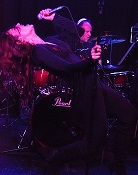 Ok, let’s get the whinge out of the way first; I really wish smaller venues would do something about their stage lighting. On a night when it looked like you had to have a pass if you weren’t taking pictures, the lighting made it almost impossible to get a decent photo. Rant over. The good news is that the support for the evening, Shady Blue Orphans were very good, knocking out a great set of mainly seventies and eighties rock covers including “Hold the Line”, “Jump” (Van Halen, not the Pointer Sisters) and the classic Thin Lizzy ballad, “Still in Love with You”. The playing was spot on and singer Tony Monk has a very special rock voice. I spent ten minutes working out that his voice sounded a lot like Music Riot favourite Aynsley Lister, and that’s a very good thing in my book.
Ok, let’s get the whinge out of the way first; I really wish smaller venues would do something about their stage lighting. On a night when it looked like you had to have a pass if you weren’t taking pictures, the lighting made it almost impossible to get a decent photo. Rant over. The good news is that the support for the evening, Shady Blue Orphans were very good, knocking out a great set of mainly seventies and eighties rock covers including “Hold the Line”, “Jump” (Van Halen, not the Pointer Sisters) and the classic Thin Lizzy ballad, “Still in Love with You”. The playing was spot on and singer Tony Monk has a very special rock voice. I spent ten minutes working out that his voice sounded a lot like Music Riot favourite Aynsley Lister, and that’s a very good thing in my book.
Anyway, on to Space Elevator. Their debut album was reviewed here last year and this is the first chance we’ve had to get out and see them live. For the Garage gig (the first of their summer mini-tour) the line-up was reduced to a four-piece, the band playing without the benefit of Elliott Ware’s keyboards. The songs from the album all fit in somewhere between good and very good and the standard of musicianship is as high as you would expect from seasoned session players but with all due respect to David Young, Brian Greene and Chas Maguire, it still needs another ingredient to make it special; to get upfront and sell that expertise and hard work to the audience. The not-so-secret weapon for Space Elevator is The Duchess and it’s fair to say she’s impossible to ignore. The voice is big and she commands stage centre with hyperactive moves and catsuit set to stun.
The set was basically a runthrough of the album with the occasional unexpected ingredient thrown in to spice up the mix, and it held together really well as a live set, opening, as the album did, with “Elevator”. The singles “I Will Find You”, “Loneliness of Love” and “Oils and Bubbles” were interspersed with “Ordinary Day”, “We Are the Losers” (which are definite singles material as well), “Little White Lies” “More Than Enough”, “Really Don’t Care” and “We Can Fly” to showcase almost all of the album. Two non-album songs, “Take the Pain” and “Far Away” were slotted in before the two sides of the current single and we even got a cheeky cover. I wouldn’t have predicted that “Day Tripper” would be a Space Elevator cover but the band made it their own with a truncated riff and a harder edge that worked particularly well. And not forgetting an encore of “Love in an Elevator” to round things off.
There were a couple of technical glitches, but you have to expect that on the first night of a tour and it was still a banging set. The songs work well live, the rhythm section was rock solid and David and The Duchess have all the melodies you could ever need. Throw in that extra bit of onstage exhibitionism and you’ve got the perfect rock package.
You can still see the rest of the tour here:
Railway Venue, Bolton April 25
Arts4every1, High Wycombe May 9
Homefest, Buckinghamshire July 19
David Young is the guitarist and songwriter with Space Elevator, who released their very fine debut album this year. When we asked him for a music-related Top 5, here’s what we got:
When we decided to release the Space Elevator album on vinyl I actually had to walk up the road to the local Oxfam to buy a couple of vinyl albums just to reacquaint myself with the size of the lyrics and general artwork.
This led to a fervent re-buying of most of my old vinyl all over again once I purchased a new deck. It is all (except for a couple) second hand, either from shops or e-bay.
My top five vinyl purchases so far are not necessarily my favourite five albums but the five that for some reason have given me most joy since purchasing them again in this format.
So here we go.
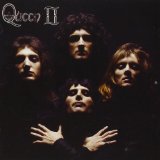 Queen 2– I was bought this for Christmas by my Gran when I was 12. It was October and she was down visiting from Glasgow. I ran home and played it before she came home on the bus, watching for her coming down the road. Once she was home that was the record gone for two whole months until Christmas. No possible way of hearing it. Tell that to a twelve year old nowadays!! It’s their best cover, inside and out!
Queen 2– I was bought this for Christmas by my Gran when I was 12. It was October and she was down visiting from Glasgow. I ran home and played it before she came home on the bus, watching for her coming down the road. Once she was home that was the record gone for two whole months until Christmas. No possible way of hearing it. Tell that to a twelve year old nowadays!! It’s their best cover, inside and out!
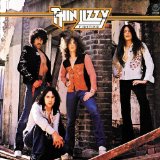 Fighting- Thin Lizzy – I bought this album when on holiday in Bournemouth when I was 14. It had the U.S. building site cover which is more tasteful than the “weaponry” of the UK version. Same cover this time. Took me right back…brilliant.
Fighting- Thin Lizzy – I bought this album when on holiday in Bournemouth when I was 14. It had the U.S. building site cover which is more tasteful than the “weaponry” of the UK version. Same cover this time. Took me right back…brilliant.
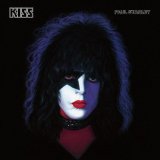 Paul Stanley – My favourite Kiss solo from 1978 was always Paul’s. I picked this up from a guy in New York on e-bay in great nick with the original poster from that awful jigsaw poster they did, and with the specific Paul merchandise sheet.
Paul Stanley – My favourite Kiss solo from 1978 was always Paul’s. I picked this up from a guy in New York on e-bay in great nick with the original poster from that awful jigsaw poster they did, and with the specific Paul merchandise sheet.
 2112-Rush – Back in the days of vinyl, I had every Rush album and treasured them. Signals was my favourite, but bizarrely I never owned 2112 on vinyl. I had a cassette. It’s great opening up the gatefold sleeve and seeing the album as it should be. I also forgot how good side 2 is!
2112-Rush – Back in the days of vinyl, I had every Rush album and treasured them. Signals was my favourite, but bizarrely I never owned 2112 on vinyl. I had a cassette. It’s great opening up the gatefold sleeve and seeing the album as it should be. I also forgot how good side 2 is!
T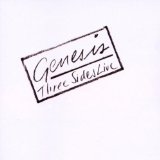 hree Sides Live-Genesis – I got into Genesis quite late and this was the first album I bought. I recently purchased it in mint condition in a shop for £4.00 It sounds absolutely superb!!
hree Sides Live-Genesis – I got into Genesis quite late and this was the first album I bought. I recently purchased it in mint condition in a shop for £4.00 It sounds absolutely superb!!
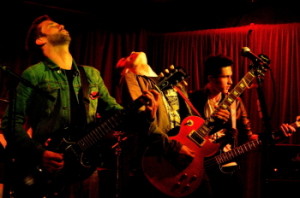 The first time I saw Federal Charm, they were supporting Southside Johnny (I know, you’re shocked that I was at a Southside Johnny gig) in Bury St Edmunds six months ago. I was gobsmacked on that night by their playing and confidence but I wanted to see the band play live again before writing a review. Since then, the band have released their first album (and very good it is too) and they’ve been playing shows across the UK. The current tour is a blues/rock package with Laurence Jones and Mitch Laddie. I’d love to tell you about Laurence and Mitch, but I could only stay for the Federal Charm set; next time, guys.
The first time I saw Federal Charm, they were supporting Southside Johnny (I know, you’re shocked that I was at a Southside Johnny gig) in Bury St Edmunds six months ago. I was gobsmacked on that night by their playing and confidence but I wanted to see the band play live again before writing a review. Since then, the band have released their first album (and very good it is too) and they’ve been playing shows across the UK. The current tour is a blues/rock package with Laurence Jones and Mitch Laddie. I’d love to tell you about Laurence and Mitch, but I could only stay for the Federal Charm set; next time, guys.
Federal Charm are Nick Bowden (vocals/guitar), Paul Bowe (guitar), L D Morawski (bass) and Danny Rigg (drums) and they’re from Stockport. It’s pretty much the standard rock band line-up with the added bonus that the quality of Nick Bowden’s playing allows the band to drop in a bit of twin lead guitar work to the mix. The relatively short set focuses mainly on the album, ripping through the big riffs of “I’m not Gonna Beg”, “There’s a Light”, “No Money Down”, and “Tell your Friends” before slowing things down with their stunning version of “Reconsider”, giving Paul Bowe the chance to let rip with blues, rock, and funk/rock solos.
So how do you follow the big showpiece song? You speed things up and get some audience participation as well, and if they don’t know your songs well enough then you play something that they do know, the Golden Earring classic, “Radar Love” and it works perfectly as a lead-in to the dirty riff of “Reaction”. Throw in a couple of non-album songs as well and you’ve got a perfectly-paced set of twenty-first century blues rock.
Federal Charm have been together less than three years, but they play with the assurance of seasoned and honed rockers. The rhythm section is rock solid as the band move through changes in tempo and style within songs (particularly “Reconsider”) and Nick Bowden and Paul Bowe are charismatic and energetic frontmen. The two guitars are used together in different ways ranging from straightforward rhythm or riff and lead guitar to more complicated twin guitar stylings with nods to The Stones and Thin Lizzy. It’s not difficult to pick out the influences, but they’re put together with such style that the end result is something that’s pure Federal Charm.
As the opening band in a three band package in London on a Tuesday night, you might expect to struggle, but Federal Charm ripped into their set as if they were playing a sellout gig at the O2, and that attitude made them a lot of friends on the night. There are a couple of things that make this band stand out. The first is that Paul Bowe is a very, very good player and he always looks like he’s having the best time ever. The other is that when you watch Nick Bowden sing, you have to ask where that incredible rock voice comes from, and he doesn’t even make it look difficult.
If you’re into blues, rock, great guitar playing, great singing or any combination of the above, you really should get out and see these guys at any of these gigs.
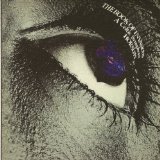 I’ve always been fascinated by the way a love of music can link episodes in your life, even when they have nothing else in common. When you meet someone and discover that you were at the same incredible gig years before or that you both love an obscure country, soul, blues or rock artist that no-one else has heard of. Or when you’re managing a venue and your entertainments manager tells you that he’s booked an artist for a St Patrick’s Day gig called Johnny Fean and you realise that it’s the Johnny Fean who played with Horslips twenty years earlier. Then, another fifteen years later you post something on a social network and the same Johnny Fean “likes” it. That’s the kind of link I mean and I want to tell you about the band and the album that triggered these coincidences.
I’ve always been fascinated by the way a love of music can link episodes in your life, even when they have nothing else in common. When you meet someone and discover that you were at the same incredible gig years before or that you both love an obscure country, soul, blues or rock artist that no-one else has heard of. Or when you’re managing a venue and your entertainments manager tells you that he’s booked an artist for a St Patrick’s Day gig called Johnny Fean and you realise that it’s the Johnny Fean who played with Horslips twenty years earlier. Then, another fifteen years later you post something on a social network and the same Johnny Fean “likes” it. That’s the kind of link I mean and I want to tell you about the band and the album that triggered these coincidences.
Horslips had released five albums before “The Book of Invasions – A Celtic Symphony” was released in April 1976. This was the first album the band recorded for Elton John’s label, DJM, and despite heavy promotion (including coloured vinyl singles) and good reviews, it only achieved an album chart position of 39 for one week in the UK. One of the reasons it’s so memorable for me is that it was part of the soundtrack for my “A” level revision through the long hot summer of 1976 (alongside Gallagher and Lyle’s “Breakaway”, Thin Lizzy’s “Jailbreak” and the Joe Walsh live album “You Can’t Argue with a Sick Mind”).
So, what makes the Horslips album a Closet Classic? The band had experimented with various permutations of rock, Irish folk and Celtic mythology on their previous albums, but it was on “The Book of Invasions” that everything gelled with the long-cherished idea of creating a classical symphony from these components. Just to wrap some context around “Invasions”, this was the era of the concept album when virtually every artist or band was trying to create a theme to link a few dodgy songs (yes, I do mean you Rick Wakeman) to create a pseudo-classical work.
Is it a symphony? Well, it’s split into three movements and it has a leitmotif which crops up throughout the album in various guises. “Daybreak” opens the album with the “Tá ‘na lá” (“It is day”) theme from a traditional Irish drinking song, in one of its many appearances, as a trumpet major key triad followed by a guitar harmonic version which leads into a harmony guitar version. before modulating into a more menacing minor key. And that’s just the first track. I’m not going to list all of the folk tunes used on the album because you can find them for yourself on the Horslips website; I’ll just say that it’s quite common on this album for a song to morph from a traditional ballad into a classic 70s riff-driven rock song.
If you’re looking for classic Celtic rock songs, then you’ll find plenty of those on this album. “Trouble (With a Capital T)”, “The Power and the Glory” and particularly “The Warm Sweet Breath of Love” (a dead ringer for the under-rated Thin Lizzy song “Running Back”) would all sound perfectly at home on “Jailbreak” which was released in the same month. But it’s not just the rock songs which work on “Invasions”; the folkier “The Rocks Remain”, “King of Morning, Queen of Day” and “Sideways to the Sun” (the story of the downfall of the Tuatha De Danann) and the instrumental interludes are all beautifully played.
I’m not saying “The Book of Invasions” is a perfect album, but it does have its perfect moments (the segue from “The Power and the Glory” to “The Rocks Remain”, for example), and at a time when everything can be found online, it would be a shame to miss this one. The scope of the album is quite breathtaking; Irish mythology rubs up against folk melodies, rock arrangements, symphonic themes, a huge range of instruments and bags of style to create a genuine classic album.
This album was the chart highpoint for Horslips in the UK and, although the subsequent “Aliens” and “The Man who Built America” were popular in the USA, the band split in 1980. Like many bands from this era, Horslips reformed for selected gigs in the noughties and can still be seen live occasionally. If you’re into rock or folk or both and you haven’t heard this before, you really should give it a listen especially after I’ve made it so easy for you.


